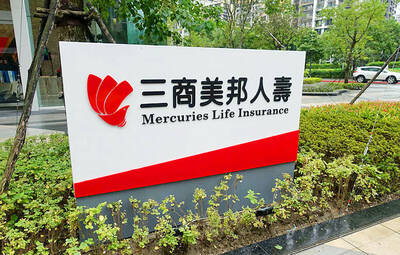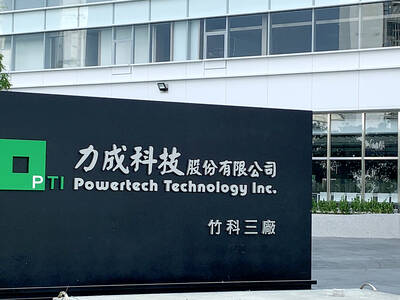Just when the vaccine rollout and economic optimism left gold looking like last year’s metal, it staged a recovery.
Bullion is one of the best performing commodities this month, erasing almost all of this year’s losses.
Investors have been lured back by gold’s appeal as an inflation hedge, while the US Federal Reserve maintains its monetary stimulus and has said price pressures should prove temporary.
Spot gold rose 0.4 percent on Friday, capping a fourth straight weekly gain.
Gold for August delivery on Friday rose US$6.80 to US$1,905.30 an ounce, up 1.5 percent for the week.
Gold is ultimately a haven asset that conventional logic suggests should suffer as the economy booms. So can the latest rally be sustained? Here are four key factors to watch:
It has been the hottest question in finance this year, and probably the biggest one for gold: Will current inflationary pressures be transitory or persistent?
If you ask the Fed, the answer is the former.
Parts of bond market disagree, with market-based measures of long-term inflation expectations rising to the highest since 2013 earlier this month.
That is a sweet spot for gold, which benefits when monetary policy keeps bond rates low even as inflation persists.
Real yields on US Treasuries have slipped deeper into negative, burnishing the appeal of bullion.
Where they go next will be critical. Any hint the Fed might taper because of inflation or labor market strength could see bond rates spike — triggering a repeat of the taper tantrum seen in the wake of the financial crisis, when gold dropped 26 percent in the space of six months.
“The position I think you get to is a place where it gets to be very vulnerable to the taper narrative,” Macquarie Group Ltd head of metals strategy Marcus Garvey said.
On the other hand, anything that drags on the global economic recovery — be it poor jobs data or new virus variants — should see real yields plunge, benefiting the metal.
The US dollar has been another important driver of gold this year.
After initially strengthening as the US vaccination program outpaced the rest of the world, it has declined since March as other nations closed the gap, providing a tailwind for the precious metal.
Most analysts do not see much movement in the US dollar going forward, with the median forecast compiled by Bloomberg suggesting only a slight strengthening.
If they are wrong, be it due to divergence in the global recovery or surprising hawkishness from other nations’ central banks, the implications for bullion could be significant.
Gold’s poor start to the year came as exchange-traded funds cut their holdings of the metal by 237 tonnes in the four months through last month. Hedge funds trading on Comex also reduced their exposure to the lowest since 2019 in early March.
In the second quarter, flows have started to reverse. If that picks up steam, gold could find another leg higher.
“There is still potentially a lot of pent-up investment demand,” Saxo Bank A/S head of commodity strategy Ole Hansen said. “Still, positions are relatively small.”
Others, including Aegon NV’s Robert Jan Van Der Mark, who cut his exposure to gold in November last year after vaccines were announced, remain to be convinced.
“With vaccination rollout on track and economies reopening, we have less appetite for a safe haven/stagflation type of assets in the portfolio,” he said.
Often touted as digital bullion, bitcoin’s rally in the first months of the year was demoralizing for gold bulls.
The two assets are both favored by those fearful of hyperinflation and currency debasement, so the cryptocurrency’s outperformance might have turned the heads of would-be bullion buyers.
Additional reporting by AP

Mercuries Life Insurance Co (三商美邦人壽) shares surged to a seven-month high this week after local media reported that E.Sun Financial Holding Co (玉山金控) had outbid CTBC Financial Holding Co (中信金控) in the financially strained insurer’s ongoing sale process. Shares of the mid-sized life insurer climbed 5.8 percent this week to NT$6.72, extending a nearly 18 percent rally over the past month, as investors bet on the likelihood of an impending takeover. The final round of bidding closed on Thursday, marking a critical step in the 32-year-old insurer’s search for a buyer after years of struggling to meet capital adequacy requirements. Local media reports

US sports leagues rushed to get in on the multi-billion US dollar bonanza of legalized betting, but the arrest of an National Basketball Association (NBA) coach and player in two sprawling US federal investigations show the potential cost of partnering with the gambling industry. Portland Trail Blazers coach Chauncey Billups, a former Detroit Pistons star and an NBA Hall of Famer, was arrested for his alleged role in rigged illegal poker games that prosecutors say were tied to Mafia crime families. Miami Heat guard Terry Rozier was charged with manipulating his play for the benefit of bettors and former NBA player and

The DBS Foundation yesterday announced the launch of two flagship programs, “Silver Motion” and “Happier Caregiver, Healthier Seniors,” in partnership with CCILU Ltd, Hondao Senior Citizens’ Welfare Foundation and the Garden of Hope Foundation to help Taiwan face the challenges of a rapidly aging population. The foundation said it would invest S$4.91 million (US$3.8 million) over three years to foster inclusion and resilience in an aging society. “Aging may bring challenges, but it also brings opportunities. With many Asian markets rapidly becoming super-aged, the DBS Foundation is working with a regional ecosystem of like-minded partners across the private, public and people sectors

BREAKTHROUGH TECH: Powertech expects its fan-out PLP system to become mainstream, saying it can offer three-times greater production throughput Chip packaging service provider Powertech Technology Inc (力成科技) plans to more than double its capital expenditures next year to more than NT$40 billion (US$1.31 billion) as demand for its new panel-level packaging (PLP) technology, primarily used in chips for artificial intelligence (AI) applications, has greatly exceeded what it can supply. A significant portion of the budget, about US$1 billion, would be earmarked for fan-out PLP technology, Powertech told investors yesterday. Its heavy investment in fan-out PLP technology over the past 10 years is expected to bear fruit in 2027 after the technology enters volume production, it said, adding that the tech would